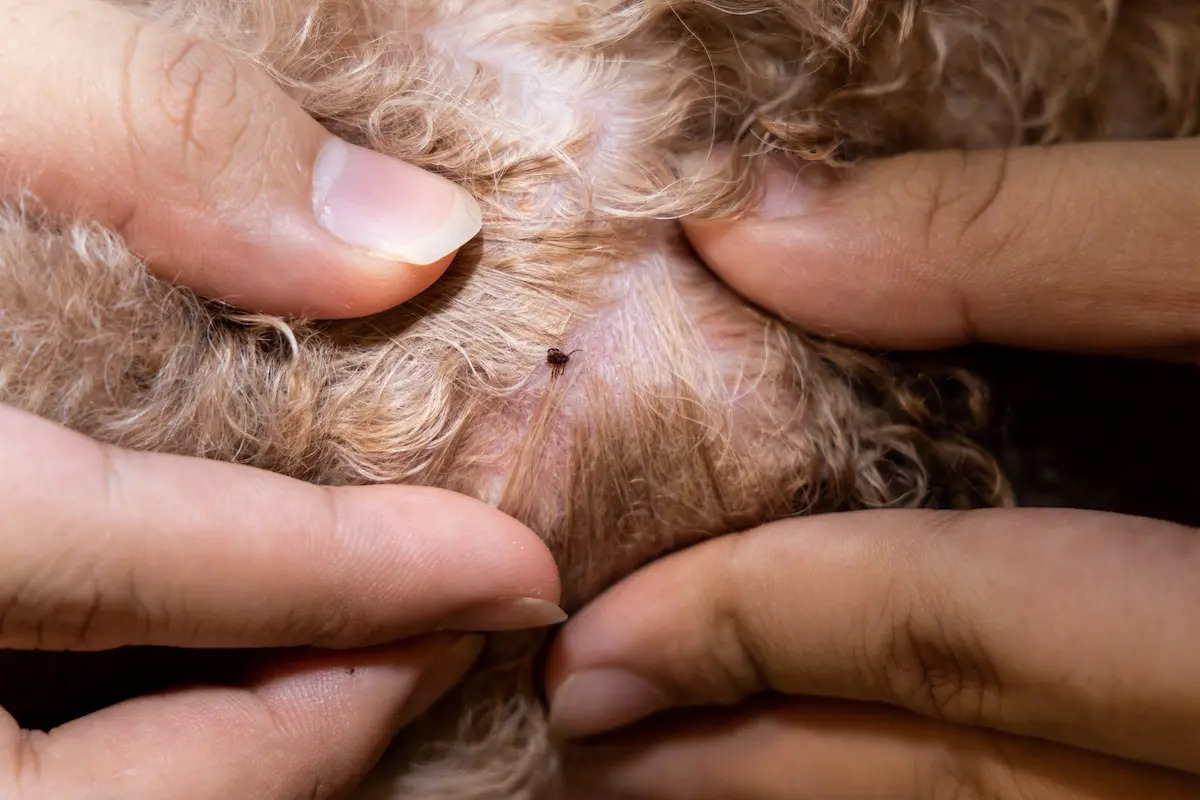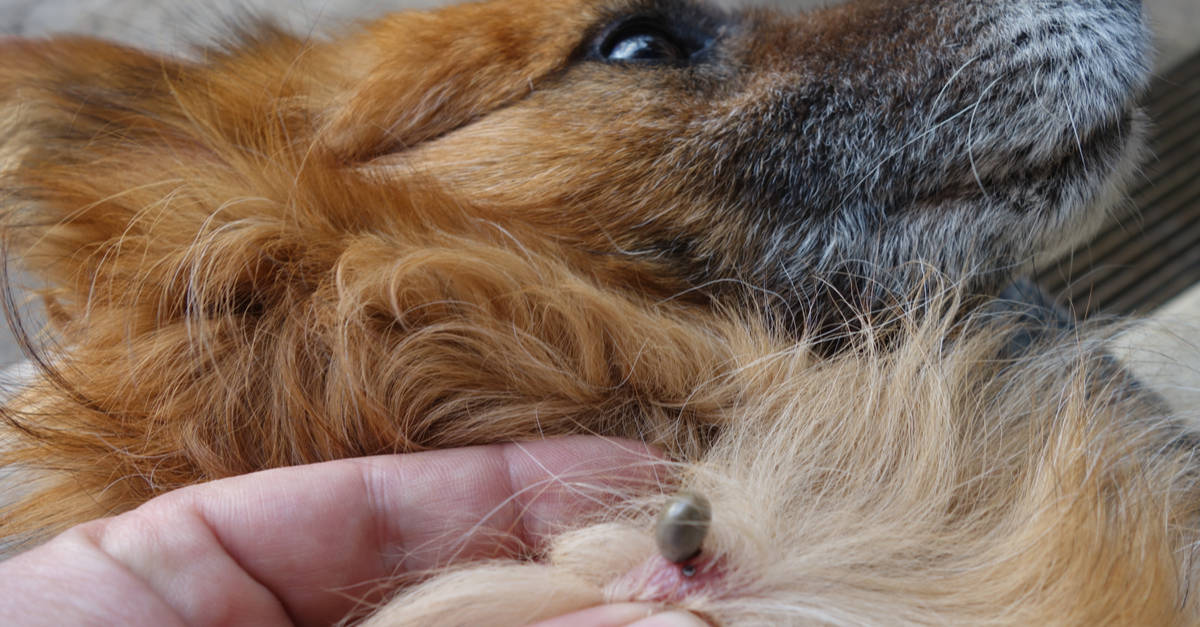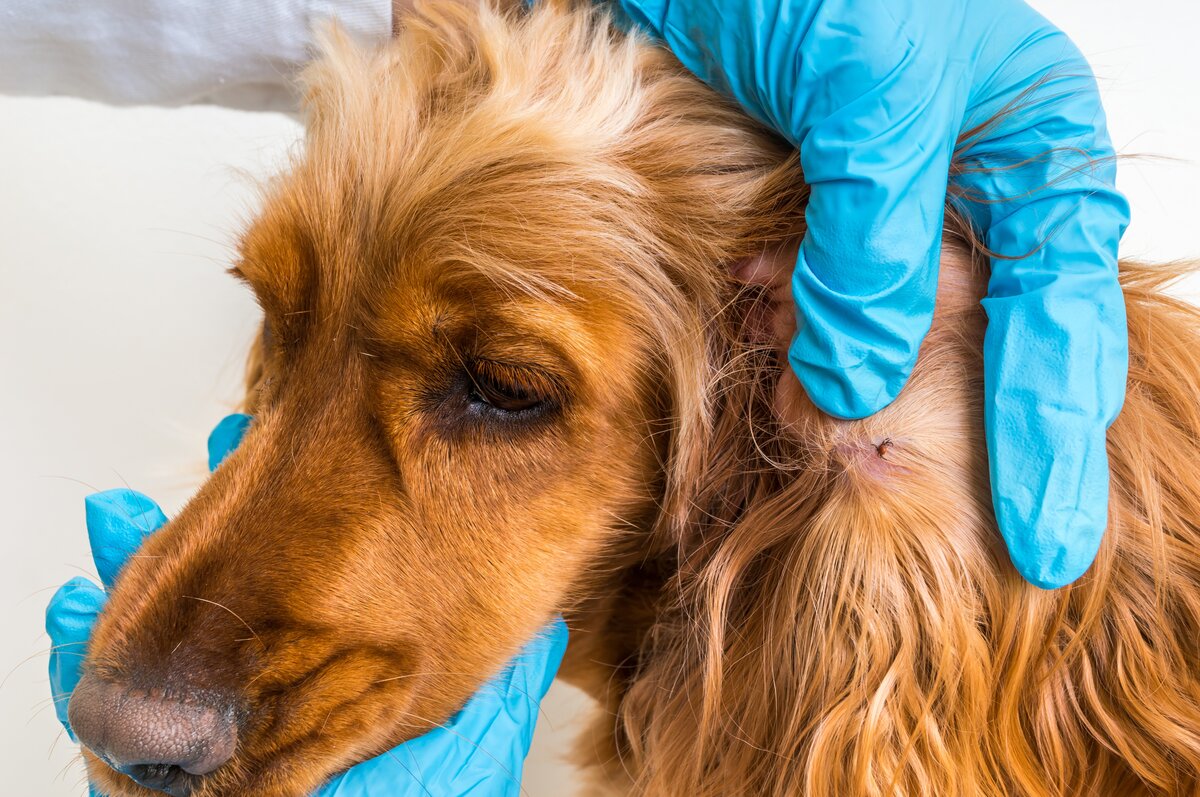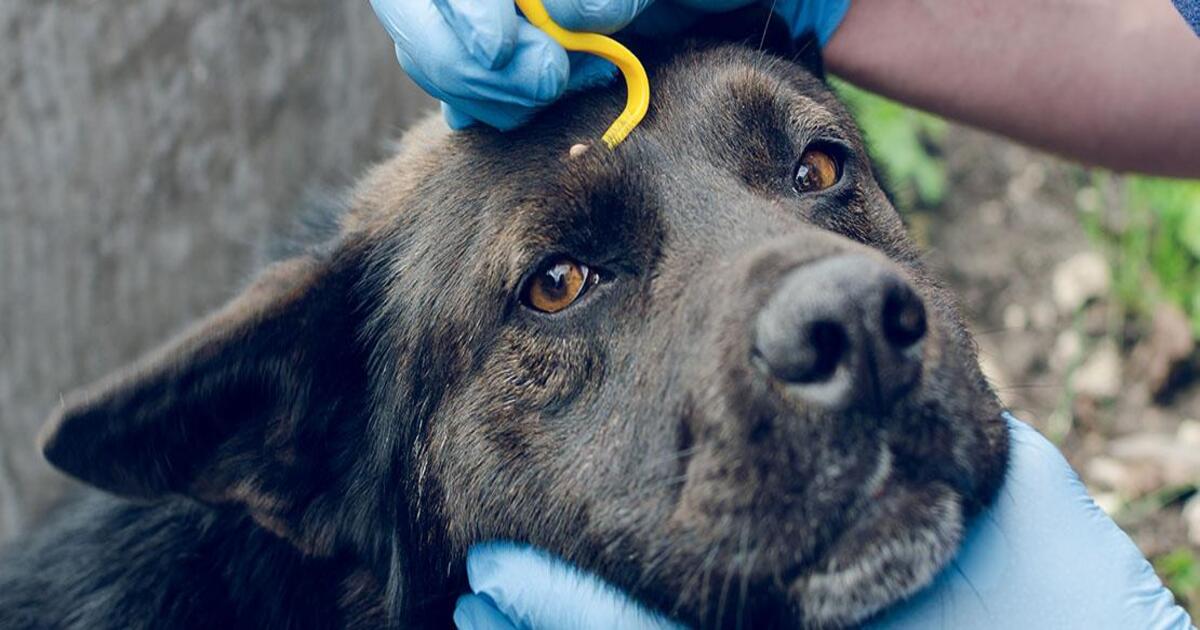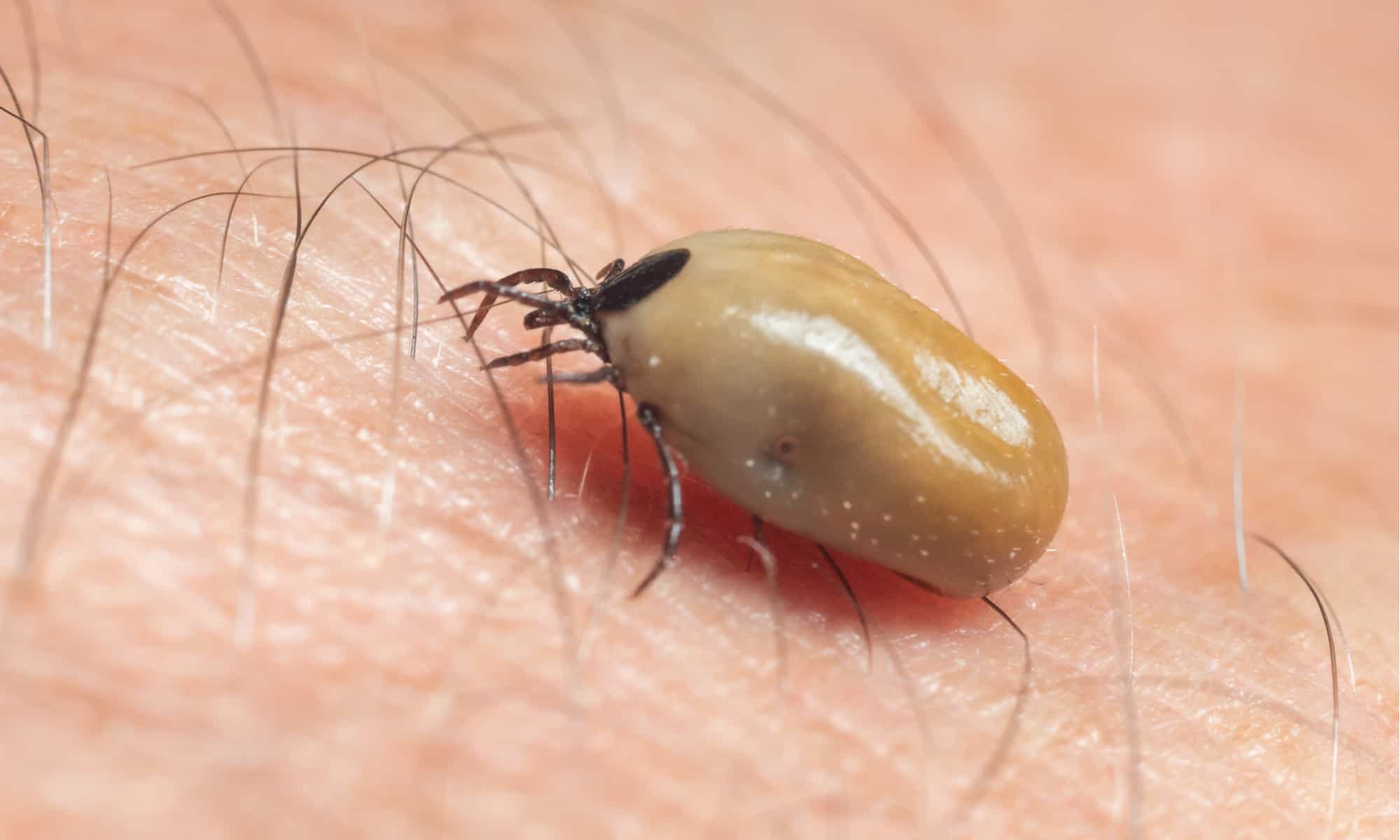Home>Health & Wellness>Common Health Issues>When Ticks Fall Off Dogs
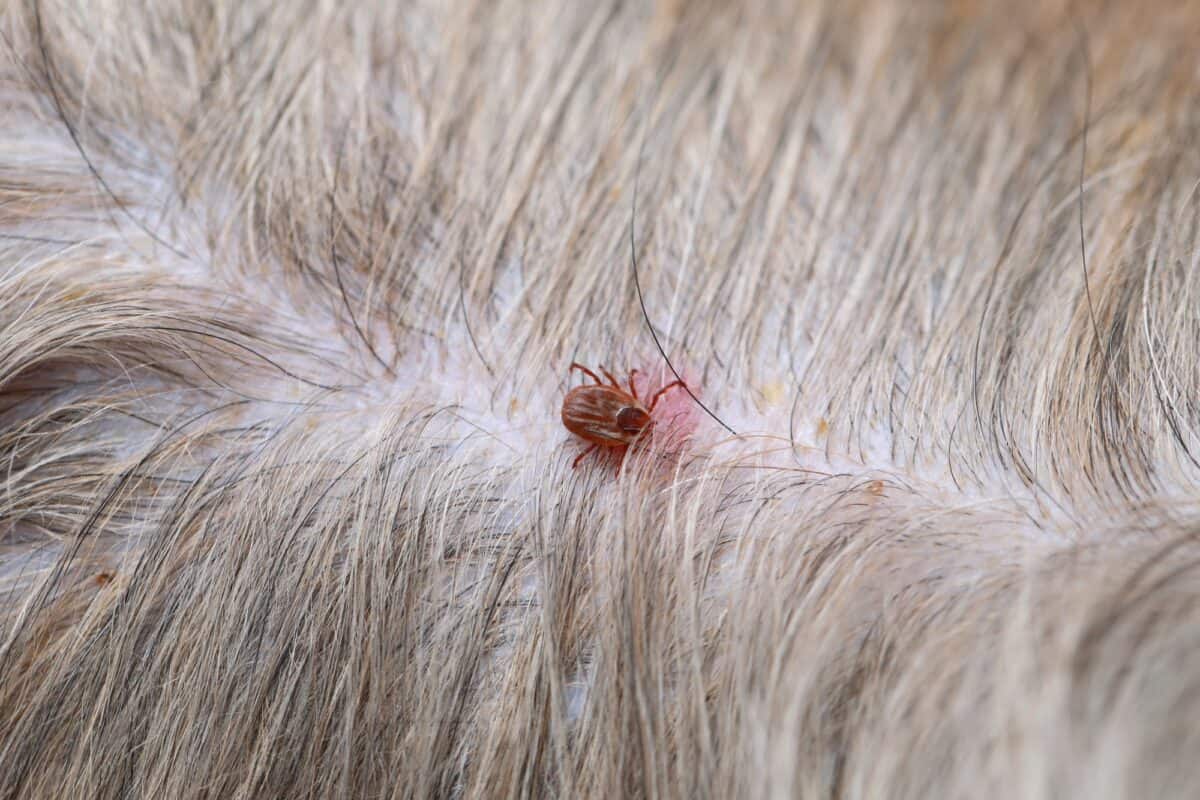

Common Health Issues
When Ticks Fall Off Dogs
Modified: February 21, 2024
Learn about common health issues related to ticks falling off dogs and how to prevent and treat them. Keep your furry friend healthy and happy with these tips.
(Many of the links in this article redirect to a specific reviewed product. Your purchase of these products through affiliate links helps to generate commission for Pawsomeoldies.com, at no extra cost. Learn more)
Table of Contents
Introduction
Ticks are tiny, blood-sucking parasites that can cause big problems for our furry friends. These pesky critters are commonly found in grassy, wooded, and humid areas, making them a significant concern for dogs who love to explore the great outdoors. As a responsible pet owner, it's crucial to understand the risks associated with ticks and how to protect your canine companion from these troublesome pests.
Ticks are not just a nuisance; they can transmit a variety of diseases to dogs, including Lyme disease, ehrlichiosis, anaplasmosis, and Rocky Mountain spotted fever. These illnesses can lead to a range of symptoms, from mild discomfort to severe health complications. Therefore, it's essential to be proactive in preventing ticks from latching onto your dog and promptly addressing any ticks that do manage to attach themselves.
In this comprehensive guide, we will delve into the behavior of ticks, how they attach to dogs, the signs of tick infestation, the potential risks and dangers posed by ticks, safe methods for tick removal, and effective strategies for preventing ticks from latching onto your beloved pet. By gaining a deeper understanding of these aspects, you will be better equipped to safeguard your dog's well-being and ensure they can continue to enjoy their outdoor adventures without the threat of tick-related health issues.
So, let's embark on this educational journey to equip ourselves with the knowledge and tools necessary to protect our furry companions from the perils of ticks. Together, we can create a safer and healthier environment for our dogs, allowing them to thrive and revel in the joys of an active and fulfilling lifestyle.
Read more: What Gets Ticks Off A Dog
Understanding Ticks and Their Behavior
Ticks are ectoparasites belonging to the arachnid family, closely related to spiders and scorpions. These minuscule creatures have a remarkable ability to adapt to various environments, thriving in grassy, wooded, and humid areas where they can easily latch onto unsuspecting hosts. Ticks go through four life stages: egg, larva, nymph, and adult. Throughout these stages, they require blood meals to progress to the next phase of their life cycle.
Ticks are opportunistic feeders, using their specialized mouthparts to pierce the skin of their host and feed on their blood. Once attached, they can remain in place for several days, engorging themselves with blood to fuel their development and reproduction. This prolonged feeding period increases the risk of disease transmission, making ticks not only a nuisance but also a potential health threat to both humans and animals.
Understanding the behavior of ticks is crucial for effectively preventing and managing infestations. Ticks are adept at detecting hosts through sensory organs that can detect changes in temperature, carbon dioxide, and movement. When a suitable host is identified, ticks use their hooked legs to grasp onto the host's fur or skin, seeking out a suitable feeding site.
Furthermore, ticks exhibit a remarkable ability to withstand adverse conditions, including extreme temperatures and dehydration. This resilience enables them to survive in various environments, making them a persistent concern for pet owners, particularly those residing in or frequenting areas with dense vegetation and wildlife.
By gaining insight into the behavior and life cycle of ticks, pet owners can take proactive measures to minimize the risk of tick infestations and protect their dogs from potential health hazards. This knowledge empowers individuals to implement targeted preventive strategies and promptly address any signs of tick presence, ensuring the well-being and vitality of their canine companions.
Understanding the intricate nature of ticks and their behavior equips pet owners with the knowledge necessary to mitigate the risks associated with tick infestations, fostering a safe and enjoyable environment for dogs to thrive in.
How Ticks Attach to Dogs
Ticks have developed remarkable adaptations that enable them to effectively attach themselves to dogs and other hosts. When a tick is in search of a blood meal, it relies on sensory organs to detect the presence of a potential host. These sensory organs are highly sensitive to changes in temperature, carbon dioxide, and movement, allowing ticks to pinpoint the location of a suitable host.
Once a dog comes into close proximity, the tick uses its hooked and barbed mouthparts to firmly grasp onto the host's skin or fur. This specialized mouthpart, known as a hypostome, enables the tick to anchor itself securely while feeding. The barbs on the hypostome prevent easy removal, making it challenging to dislodge the tick once it has attached itself to the dog.
Ticks are opportunistic feeders, and they seek out areas with thinner skin and less hair to facilitate feeding. Common attachment sites on dogs include the ears, neck, face, and between the toes. However, ticks can attach themselves anywhere on the dog's body, making thorough inspections crucial after outdoor activities.
As ticks feed, they secrete a cement-like substance to further secure their attachment to the host. This adhesive substance not only anchors the tick in place but also helps to create a feeding pool by preventing the host's blood from clotting. The combination of the barbed mouthparts and the adhesive secretion makes it challenging to remove ticks without proper techniques and tools.
Understanding how ticks attach to dogs is essential for implementing effective preventive measures and promptly addressing any potential infestations. Regularly inspecting your dog for ticks, especially after outdoor excursions, can help identify and remove ticks before they have a chance to transmit diseases. Additionally, utilizing tick prevention products and maintaining a well-groomed outdoor environment can reduce the likelihood of ticks latching onto your canine companion.
By gaining insight into the mechanisms by which ticks attach to dogs, pet owners can take proactive steps to safeguard their pets from the potential health risks associated with tick infestations. This knowledge empowers individuals to create a safer and healthier environment for their dogs, allowing them to enjoy their adventures without the threat of tick-related complications.
Signs of Ticks on Dogs
Identifying the presence of ticks on dogs is crucial for timely intervention and the prevention of potential health complications. While ticks are adept at attaching themselves to their hosts without causing noticeable discomfort, several signs can indicate their presence on dogs. By recognizing these signs, pet owners can promptly address tick infestations and protect their canine companions from the associated risks.
-
Visible Ticks: The most obvious sign of tick infestation is the presence of ticks on the dog's skin. Ticks can vary in size, ranging from as small as a poppy seed to as large as a pencil eraser when engorged with blood. Conducting thorough visual inspections of your dog's skin and coat, especially in areas where ticks are likely to attach, such as the ears, neck, and between the toes, can help identify visible ticks.
-
Skin Irritation and Inflammation: When ticks attach and feed on a dog's blood, they inject saliva into the skin, which can lead to localized irritation and inflammation. Infested areas may appear red, swollen, or irritated, indicating the presence of ticks. Dogs may exhibit signs of discomfort, such as excessive scratching or licking, in response to the irritation caused by tick bites.
-
Lethargy and Weakness: Tick infestations can lead to systemic effects on a dog's health, potentially causing lethargy, weakness, and decreased activity levels. If your dog displays unexplained fatigue or a lack of energy, it could be indicative of a tick-borne illness, prompting the need for a thorough examination to check for ticks and assess potential health concerns.
-
Visible Bite Marks: In some cases, bite marks left by ticks may be visible on the dog's skin. These bite marks can appear as small, red, or dark spots, particularly in areas where ticks have fed. Close inspection of the dog's skin can reveal these bite marks, serving as a visual indicator of tick infestation.
-
Unexplained Symptoms: Dogs infested with ticks may exhibit a range of unexplained symptoms, including fever, loss of appetite, joint stiffness, and lameness. These symptoms can be indicative of tick-borne diseases, such as Lyme disease or ehrlichiosis, which require prompt veterinary attention for diagnosis and treatment.
By remaining vigilant and attentive to these signs, pet owners can promptly address tick infestations and seek appropriate veterinary care to mitigate the potential health risks posed by ticks. Regular grooming and thorough inspections of your dog's skin and coat are essential practices for detecting ticks and ensuring the well-being of your canine companion.
Understanding the signs of tick infestation empowers pet owners to take proactive measures in safeguarding their dogs from the perils of tick-borne diseases, fostering a safe and healthy environment for their beloved pets to thrive in.
Risks and Dangers of Ticks on Dogs
Tick infestations pose significant risks and dangers to the health and well-being of dogs, making it imperative for pet owners to be aware of the potential consequences associated with these blood-sucking parasites. The following are the key risks and dangers of ticks on dogs:
Read more: How To Get A Tick Off Of My Dog’s Eye Area
Transmission of Tick-Borne Diseases:
Ticks are notorious vectors for a variety of debilitating diseases that can affect dogs. Lyme disease, caused by the bacterium Borrelia burgdorferi, is one of the most prevalent tick-borne illnesses, characterized by symptoms such as fever, lameness, and joint swelling. Additionally, ehrlichiosis and anaplasmosis, transmitted by the brown dog tick and the deer tick, can lead to an array of health complications, including anemia, bleeding disorders, and organ damage. Furthermore, Rocky Mountain spotted fever, caused by the bacterium Rickettsia rickettsii, can result in fever, lethargy, and neurological abnormalities. The transmission of these diseases through tick bites can have severe implications for a dog's health, underscoring the importance of preventing tick infestations.
Anemia and Weakness:
Prolonged tick infestations can lead to significant blood loss, potentially resulting in anemia and weakness in affected dogs. As ticks engorge themselves with blood during feeding, they can cause a substantial depletion of the dog's blood supply, leading to anemia, characterized by symptoms such as pale gums, lethargy, and decreased stamina. Severe anemia can pose life-threatening risks, emphasizing the critical need to address tick infestations promptly.
Allergic Reactions:
Some dogs may develop allergic reactions to tick bites, leading to localized swelling, itching, and skin irritation. These allergic responses can exacerbate the discomfort experienced by affected dogs and may require veterinary intervention to alleviate symptoms and prevent secondary infections. Additionally, repeated exposure to tick bites can exacerbate allergic reactions, impacting the dog's quality of life and overall well-being.
Secondary Infections:
The act of ticks embedding themselves in a dog's skin and feeding on their blood can create open wounds and lesions, increasing the risk of secondary bacterial infections. These infections can lead to localized inflammation, pain, and discomfort for the affected dog, necessitating medical attention and appropriate wound care to prevent further complications.
Read more: What Can Be Used To Keep Ticks Off Dogs
Potential Long-Term Health Implications:
In addition to the immediate risks posed by tick infestations, the long-term health implications of untreated tick-borne diseases can be severe. Chronic conditions such as joint inflammation, kidney dysfunction, and neurological disorders can manifest in dogs affected by tick-borne illnesses, impacting their quality of life and requiring ongoing medical management.
By understanding the risks and dangers associated with ticks on dogs, pet owners can prioritize preventive measures and prompt intervention to safeguard their canine companions from the potential health hazards posed by tick infestations. Proactive tick control, regular grooming, and veterinary consultations can collectively contribute to creating a safer and healthier environment for dogs to thrive in, free from the perils of tick-related complications.
How to Safely Remove Ticks from Dogs
Safely removing ticks from dogs is a crucial skill for pet owners, as improper removal methods can increase the risk of disease transmission and skin irritation. When discovering a tick on your dog, it's essential to approach the removal process with care and precision to minimize potential health risks. Here's a step-by-step guide on how to safely remove ticks from dogs:
-
Gather the Necessary Tools: Before initiating the removal process, gather fine-tipped tweezers, gloves, rubbing alcohol, and antiseptic ointment. These tools will facilitate safe and effective tick removal while minimizing the risk of skin contamination.
-
Prepare the Area: Choose a well-lit and comfortable area to perform the tick removal procedure. Calm your dog and ensure they are in a relaxed state to minimize movement during the process.
-
Wear Protective Gloves: Put on gloves to protect yourself from potential exposure to tick-borne pathogens and to maintain a hygienic environment during the removal process.
-
Grasp the Tick with Tweezers: Using fine-tipped tweezers, grasp the tick as close to the dog's skin as possible. Avoid squeezing the tick's body to prevent the release of additional saliva or pathogens into the dog's bloodstream.
-
Gently Pull the Tick: With a steady hand, gently pull the tick straight out, applying even pressure. Avoid twisting or jerking motions, as these actions can cause the tick's mouthparts to break off and remain embedded in the dog's skin.
-
Disinfect the Bite Area: After removing the tick, disinfect the bite site and the tweezers with rubbing alcohol to minimize the risk of infection. Additionally, apply an antiseptic ointment to the bite area to promote healing and reduce the likelihood of skin irritation.
-
Dispose of the Tick: Place the tick in a sealed container or bag, ensuring it is securely contained to prevent potential reinfestation or accidental contact with humans or other pets.
-
Monitor the Dog: Keep a close eye on the dog for any signs of infection or adverse reactions following the tick removal. If the dog exhibits unusual symptoms or discomfort, seek veterinary attention promptly.
By following these guidelines, pet owners can safely and effectively remove ticks from their dogs, minimizing the risk of disease transmission and promoting the well-being of their beloved pets. Additionally, maintaining regular tick checks and utilizing preventive measures, such as tick control products and environmental management, can further reduce the likelihood of tick infestations, creating a safer and healthier environment for dogs to thrive in.
Preventing Ticks from Attaching to Dogs
Preventing ticks from attaching to dogs is a proactive and essential aspect of responsible pet care, particularly for canines that spend time outdoors. By implementing targeted preventive measures, pet owners can significantly reduce the risk of tick infestations and the associated health hazards for their beloved pets. Here are several effective strategies for preventing ticks from latching onto dogs:
1. Tick Control Products:
Utilizing veterinarian-recommended tick control products, such as spot-on treatments, oral medications, and tick collars, can provide effective protection against ticks. These products are designed to repel ticks or eliminate them upon contact, reducing the likelihood of infestations and disease transmission.
2. Environmental Management:
Maintaining a well-groomed outdoor environment can help minimize tick habitats and exposure. Regularly mowing the lawn, clearing leaf litter, and trimming overgrown vegetation can create a less hospitable environment for ticks, reducing the risk of encounters with these parasites.
3. Tick Deterrents:
Natural tick deterrents, such as essential oils and herbal sprays, can be used to repel ticks from dogs. Certain essential oils, including cedarwood, eucalyptus, and lavender, possess tick-repelling properties and can be diluted and applied to the dog's collar or bedding to deter ticks.
4. Regular Grooming and Inspections:
Frequent grooming sessions provide an opportunity to inspect the dog's skin and coat for any signs of ticks. Thoroughly combing through the fur and visually inspecting common attachment sites, such as the ears, neck, and between the toes, can help identify and remove ticks before they have a chance to feed.
5. Vaccination Against Tick-Borne Diseases:
In regions where tick-borne diseases are prevalent, vaccination against specific pathogens, such as Lyme disease, can provide an additional layer of protection for dogs. Consult with a veterinarian to determine the most suitable vaccination protocols based on the dog's lifestyle and risk factors.
Read more: What Dog Allergy Causes Fur To Fall Out?
6. Limiting Outdoor Exposure:
During peak tick activity periods, such as spring and summer, consider limiting the dog's outdoor activities in areas known to be tick-infested. Opt for walks and playtime in well-maintained, open spaces, and avoid dense vegetation and wooded areas where ticks are more prevalent.
7. Regular Veterinary Check-ups:
Scheduled veterinary examinations enable early detection of tick-related issues and the implementation of preventive measures tailored to the dog's specific needs. Veterinarians can provide guidance on tick control, recommend suitable products, and conduct thorough health assessments to ensure the dog's well-being.
By integrating these preventive strategies into a comprehensive tick management plan, pet owners can create a safer and healthier environment for their dogs, minimizing the risk of tick infestations and the associated health complications. Proactive tick prevention not only safeguards the well-being of canine companions but also promotes peace of mind for pet owners, allowing dogs to enjoy their outdoor adventures without the threat of tick-related concerns.
Conclusion
In conclusion, safeguarding our canine companions from the perils of tick infestations is a fundamental aspect of responsible pet ownership. By gaining a deeper understanding of ticks and their behavior, recognizing the signs of tick presence, and comprehending the risks associated with tick-borne diseases, pet owners can proactively protect their dogs from potential health hazards. The safe removal of ticks from dogs, coupled with effective preventive measures, plays a pivotal role in creating a safer and healthier environment for our beloved pets to thrive in.
It is evident that ticks pose significant risks to the well-being of dogs, with the potential for disease transmission, anemia, allergic reactions, and long-term health implications. However, through diligent monitoring, regular grooming, and the implementation of preventive strategies, pet owners can mitigate these risks and ensure the vitality of their canine companions.
The process of safely removing ticks from dogs requires precision, care, and attention to minimize the risk of disease transmission and skin irritation. By following established guidelines and utilizing the necessary tools, pet owners can effectively address tick infestations and promote the recovery and comfort of their dogs.
Furthermore, the implementation of preventive measures, such as tick control products, environmental management, and regular grooming practices, serves as a proactive defense against tick infestations. These strategies not only reduce the likelihood of ticks latching onto dogs but also contribute to creating a harmonious and safe outdoor environment for pets to enjoy.
In essence, the well-being of our dogs is intricately linked to our ability to protect them from the perils of tick infestations. By remaining vigilant, informed, and proactive in our approach to tick management, we can create a nurturing and secure environment where our canine companions can thrive without the threat of tick-related complications. Through our dedication to their health and happiness, we can ensure that our dogs continue to revel in the joys of an active and fulfilling lifestyle, free from the burdens imposed by tick-borne concerns.
